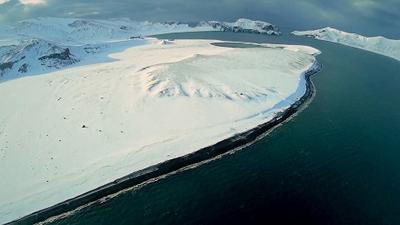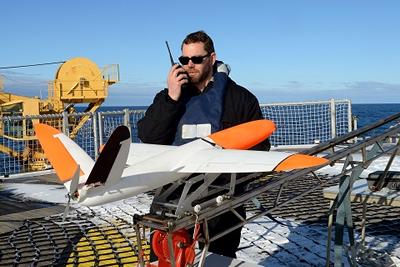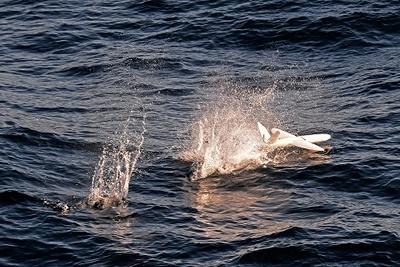Successful Antarctic test flights for Southampton's SULSA

Autonomous Systems research that helps ice-patrol ships to plan effective routes
Project Albatross was born out of the successful flight of SULSA from HMS Mersey off the Dorset coast in July 2015, when the captain of HMS Protector, the Royal Navy’s ice patrol ship, offered to host a more ambitious set of trials in the Antarctic that would demonstrate the potential utility of a small electric UAV and give the University operational experience and a deeper understanding of Navy requirements. The aircraft would again be catapult-launched from the ship, but would be required to ditch in the sea after flight, and be recovered by the ship’s sea boat. So three aircraft were prepared, with the aim of performing a minimum of three flights. Further flights depended on the condition of the aircraft after ditching in the sea. Autonomous Systems member Andrew Lock was chosen to support the trials due to his experience with maintaining and piloting SULSA.
Andrew joined HMS Protector in Punta Arenas, Chile, on March 7th, but didn't get MAA clearance to fly for another three weeks. In the intervening time the team assembled the aircraft, planned the flights in detail and performed ground tests; including tests to see how the aircraft's communications systems and propulsion system behaved in sub-zero temperatures.

The first successful flight was on 29th March. The aim was to assess the accuracy of navigation by flying a series of waypoints in close proximity to the ship. While navigation wasn’t perfect, it gave enough confidence to perform flights further from the ship. The next opportunity to fly came two days later. The aim here was to survey an abandoned research base on Deception Island, 1.5 km from the ship. This five minute flight was the first Extended Visual Line Of Sight (EVLOS) flight conducted by the University of Southampton.
The next day, SULSA conducted a more ambitious flight; a circuit around the ship at a radius of 1.3 km, which allowed SULSA’s onboard camera to capture some spectacular footage of the Deception Island crater.

The final flight on 3rd April was intended to simulate a typical mission; flying ahead of the ship to capture footage of ice sheets and other obstacles to assist with route planning. The mission started as planned, and although on this occasion both the ship and SULSA experienced patchy GPS coverage during the flight, the ability to manually control the aircraft meant that this was not an issue.
The trials showed that a small UAV like SULSA could provide a ship like HMS Protector with the information it needs to plan its route more effectively. It was found that the Antarctic temperatures did not significantly affect flight duration or performance, and the SULSA airframe was robust enough to survive undamaged despite repeated ditching in the sea. However, the patchy GPS coverage in this part of the world was an issue on one occasion. The trials also highlighted some clear opportunities to improve the system, such equipping it with a live video downlink capability and making it capable of landing back on the ship.

The trials showed that a small UAV like SULSA could provide a ship like HMS Protector with the information it needs to plan its route more effectively. It was found that the Antarctic temperatures did not significantly affect flight duration or performance, and the SULSA airframe was robust enough to survive undamaged despite repeated ditching in the sea. However, the patchy GPS coverage in this part of the world was an issue on one occasion. The trials also highlighted some clear opportunities to improve the system, such equipping it with a live video downlink capability and making it capable of landing back on the ship.
This trial of these low-cost but highly versatile aircraft has been an important first step in establishing the utility of unmanned aerial vehicles in this region. It’s demonstrated to me that this is a capability that I can use to great effect.
The series of flights conducted by Southampton staff in conjunction with the Royal Navy from HMS Protector has been a great success. These flights have shown just what can be achieved with smart design and low cost digital manufacture